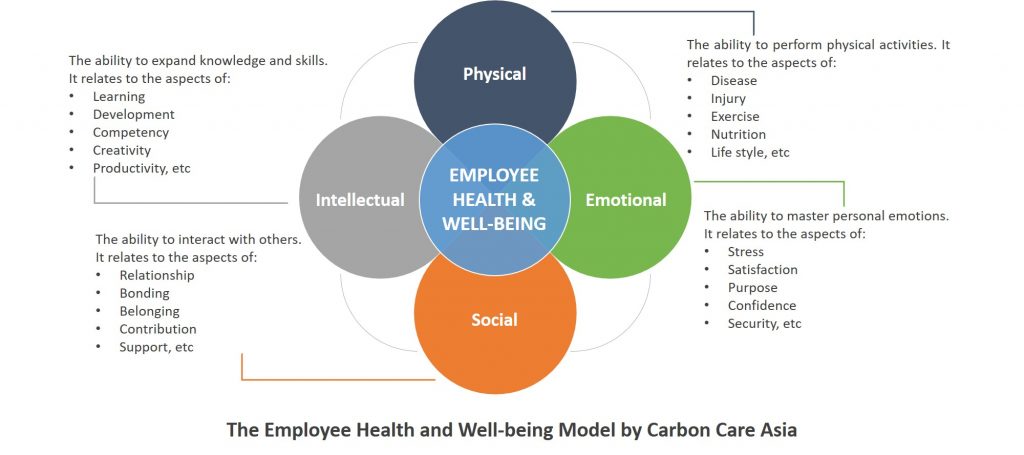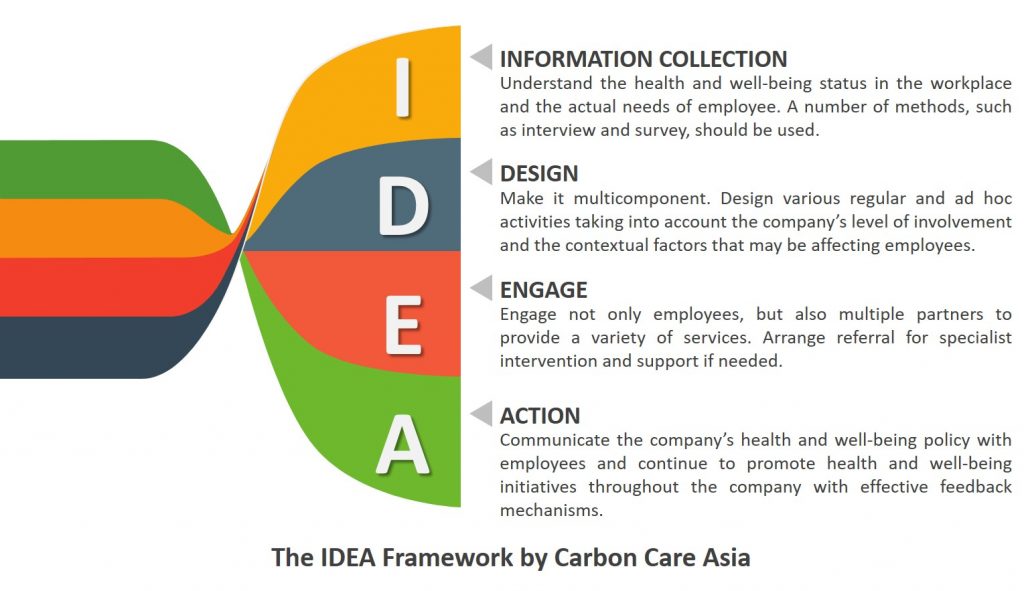To comply with regulatory requirements, more and more listed companies are publishing their sustainability reports or environmental, social and governance (ESG) reports. In these reports, it is not uncommon to see sentences like “To safeguard our people’s physical and mental well-being, we endeavour to create a workplace that is free from work-related injury.” If we take this issue seriously, employee health and well-being means vastly more than just the avoidance of workplace injuries.
Let’s start with the definition. Although there is no unified definition of employee health and well-being, according to International Labour Organization, workplace well-being “relates to all aspects of working life, from the quality and safety of the physical environment, to how workers feel about their work, their working environment, the climate at work and work organization.” This supports the idea that employee Health and Well-being is a holistic concept, with physical, emotional, intellectual and social dimensions. The following picture illustrates this broader concept.

Employee health and well-being encompasses a range of issues that influence one other. Many adults spend more than half their waking time at work, therefore workplace health and well-being is an essential part of those people’s overall happiness.
The case can be made that individuals are responsible for their own happiness. However, for any business, it’s important to care about employee health and well-being. It is easy to develop a long list of benefits, such as employee attraction and retention, better performance at work, higher morale, fewer absences from ill health, greater corporate reputation and so forth. A number of companies (not only well-known brands, but also small businesses) have implemented impressive employee health and well-being programs and achieved several of the benefits listed above. This is not a coincidence.
Traditional employee health and well-being initiatives are part of a company’s benefits package, limited to such things as fitness incentives, cooking classes, subsidized development courses, flexible work hours and helplines. Such initiatives are often considered as something nice-to-have. However, if you want your business to reap the ultimate benefits of employee health and well-being programmes, adopting a holistic approach is essential. Recognizing that a broad range of factors are influencing employee health and well-being, companies today are increasingly implementing comprehensive programmes that integrate health and well-being into the overall workplace experience.
What makes an effective employee health and well-being program? The IDEA framework can be of help.

The IDEA framework seeks to identify the issues facing their valued employees, both within the work environment and more generally in their lives. The company can then see how it can assist, not only in terms of working arrangements, but also by offering support such as third party specialist advice, which can improve the overall well-being of staff members. Two-way communication is a significant component of the IDEA framework to monitor if policies are achieving their intended aims, and to identify and address chronic or emerging health and well-being issues.
In this way, health and well-being become part of a company’s core business practices and sustainability strategy; ensuring the company is both responsible and successful.
This article is written Chloe Mok, Director of Sustainability Strategy, Carbon Care Asia (CCA), provider of cutting-edge services in carbon strategy and sustainability innovation